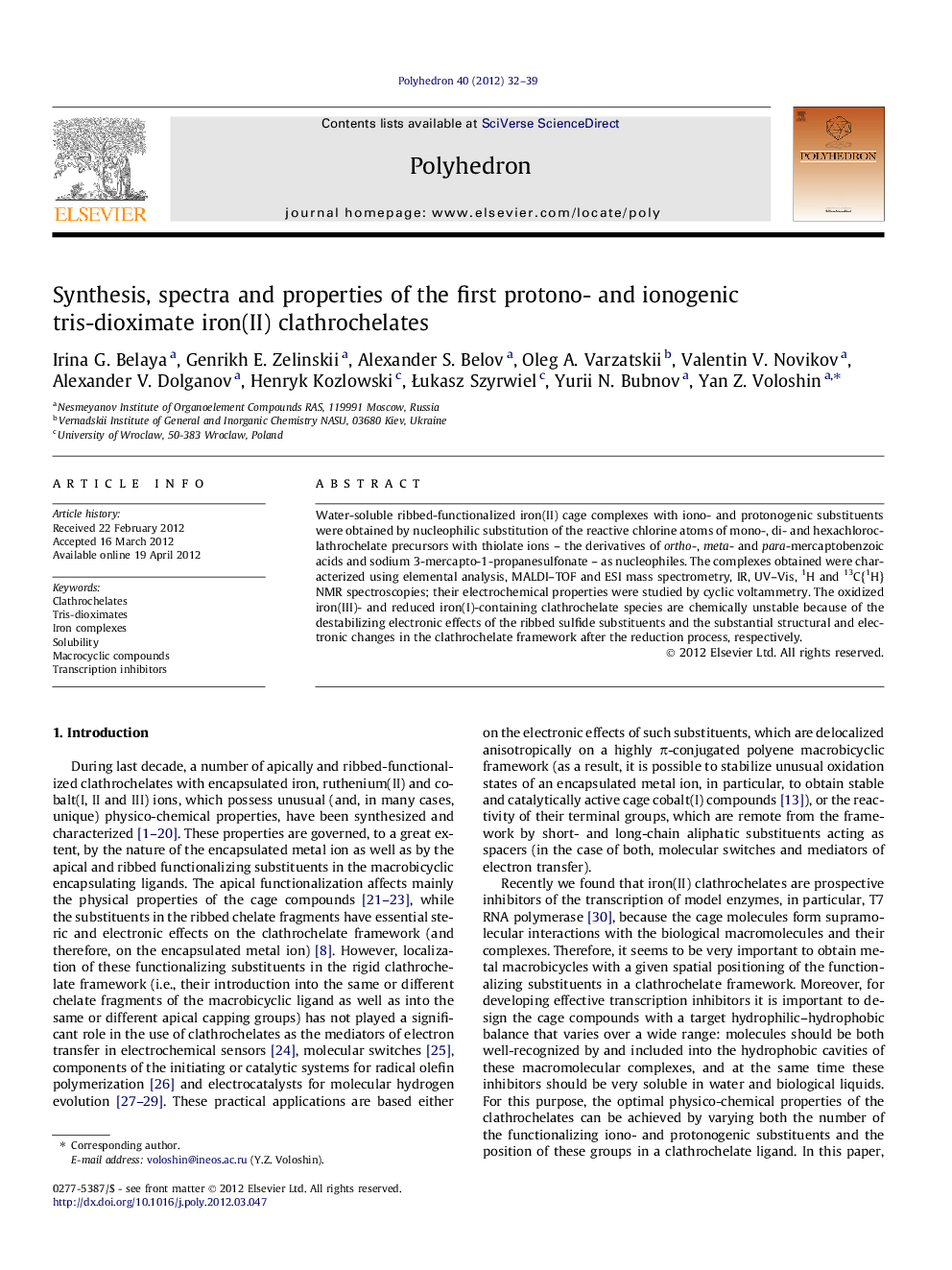| Article ID | Journal | Published Year | Pages | File Type |
|---|---|---|---|---|
| 1337475 | Polyhedron | 2012 | 8 Pages |
Water-soluble ribbed-functionalized iron(II) cage complexes with iono- and protonogenic substituents were obtained by nucleophilic substitution of the reactive chlorine atoms of mono-, di- and hexachloroclathrochelate precursors with thiolate ions – the derivatives of ortho-, meta- and para-mercaptobenzoic acids and sodium 3-mercapto-1-propanesulfonate – as nucleophiles. The complexes obtained were characterized using elemental analysis, MALDI–TOF and ESI mass spectrometry, IR, UV–Vis, 1H and 13C{1H} NMR spectroscopies; their electrochemical properties were studied by cyclic voltammetry. The oxidized iron(III)- and reduced iron(I)-containing clathrochelate species are chemically unstable because of the destabilizing electronic effects of the ribbed sulfide substituents and the substantial structural and electronic changes in the clathrochelate framework after the reduction process, respectively.
Graphical abstractThe nucleophilic substitution of the reactive chlorine atoms of clathrochelate precursors with thiolate ions – the derivatives of the ortho-, meta- and para-mercaptobenzoic acids and sodium 3-mercapto-1-propanesulfonate – as the nucleophiles afforded water-soluble ribbed-functionalized iron(II) cage complexes with iono- and protonogenic substituents.Figure optionsDownload full-size imageDownload as PowerPoint slideHighlights► Iron(II) clathrochelates with iono- and protonogenic groups were obtained. ► Macrobicyclic precursors undergo nucleophilic substitution with mercaptobenzoic acids. ► The thiolate derivative of sodium 3-mercapto-1-propanesulfonate was used as a nucleophile. ► The macrobicyclic ribbed-functionalized iron(II) complexes obtained are soluble in water.
